Peter O’Sullivan farms with his father at the foot of the Wicklow Mountains, near Blessington.
They also run a small contracting business carrying out the services of baling, plant hire and, in more recent years, reseeding, which led Peter to set up Bullseye Engineering.
Having struggled with ploughing due to the rocky Wicklow surroundings, Peter made the decision to ditch the plough and try his hand at building a machine for low-disturbance grassland reseeding.
“I bought a plough and found myself selling it a year later. It was too hard to keep going due to the amount of stones in our land. Ploughing around here raises a lot of stones. We tried power harrowing, but it wasn’t much better.
“So, I said I’d take the chance and try build a machine capable of overseeding into existing grassland, as well as being capable of seeding directly into ploughed cultivated land.”
Peter’s hands-on approach and passion for engineering dates back to his youth. He trained as a fitter with Lufthansa Technik at the Baldonell facility in Dublin, spending five years predominately rebuilding aircraft engines.
However, the company shut in 2013 and Peter began driving machinery for a time in Dublin before purchasing his own digger and coming home to focus entirely on the farm and contracting business.
Building a machine for the job
Over the winter of 2018, Peter started working on his design. “I started the build the following spring. The only time I had to dedicate to it was spare time in the evenings and on weekends. Certain aspects were designed on the fly.
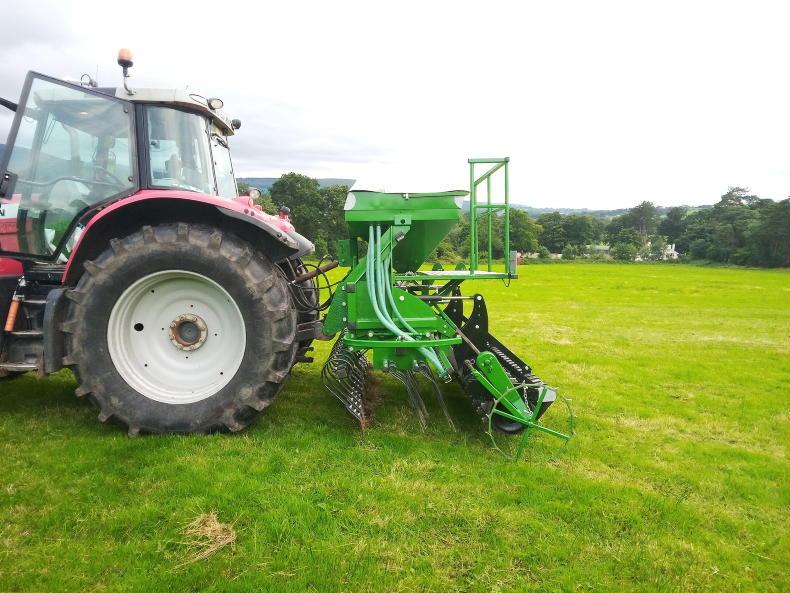
The drill provides a multipurpose solution for both overseeding and drilling into ploughed and cultivated ground.
“For example, I originally was going to have each of the tool bars manually adjustable, but then I decided hydraulic adjustment would be a better job.
“Things like this meant there were subsequent changes on the go. This and the fact I was limited with tools was time-consuming. I had no access to plasma cutters or anything like that. Everything was cut with an angle grinder and drilled or welded manually.”
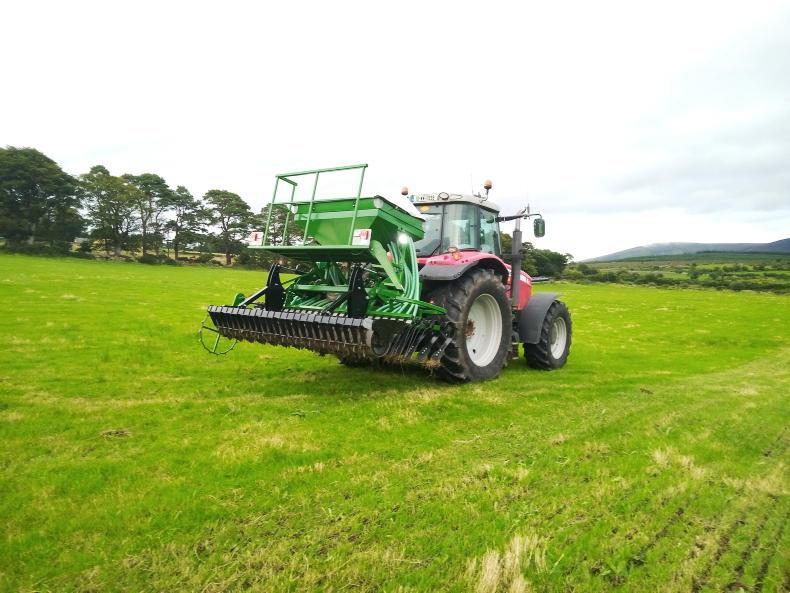
Peter won the 2020 farm level innovation award for his multipurpose PTR 3000s drill.
Peter took the bones of an old Kverneland Accord drill – including the seed unit, metering system, seed hopper, distribution system and hydraulic fan – and worked from there.
The fact that the Accord is a straightforward, proven drill with parts still readily available influenced the choice.
“The end goal was to build a practical machine more so than something fancy. Some individual components took me as long as a day to make, so it wasn’t a fast process.”
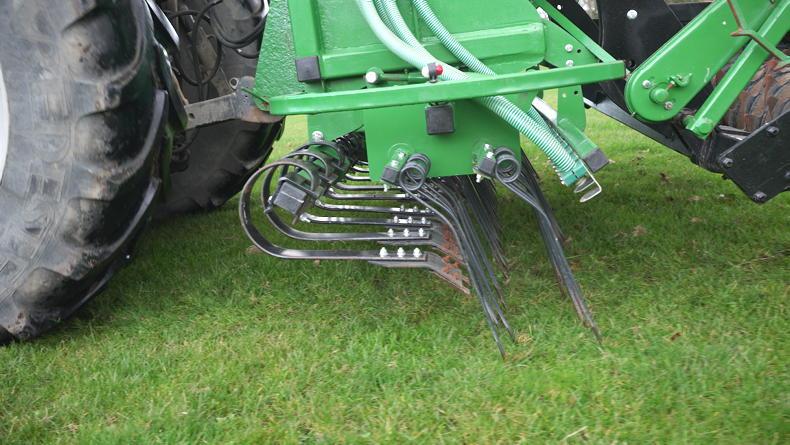
Each of the tool bars can have its working intensity adjusted hydraulically.
Peter equipped the drill with load-sensing hydraulics, which he said was a considerable cost, but added hugely to the ease of use of the machine, eliminating a number of double-acting spool valves. Everything including the individual tools and hydraulic fan for the seeding unit is worked off the load-sensing valve block and a single terminal in turn.
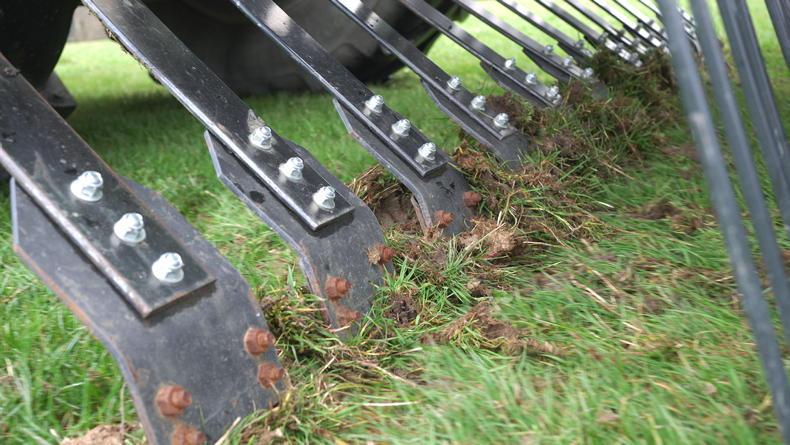
To the front of the drill are 13 adjustable levelling paddles to level the surface and break clods.
This means that if the tractor is fitted with load sensing, then only one double-acting spool is required to use the drill. Peter says the finished drill weighs in the region of 1,450kg to 1,500kg unladen and recommends a minimum power requirement in the region of 120hp.
The end product of Peter’s hard graft is a multipurpose 3m drill and grassland management tool capable of both overseeding and seeding into ploughed and cultivated land.
This first machine is what he calls the Bullseye Engineering PTR 3000s multipurpose drill. The model lettering stands for paddles, tines and roller (PTR), while 3000 denotes the 3m working width and S stands for seeder.
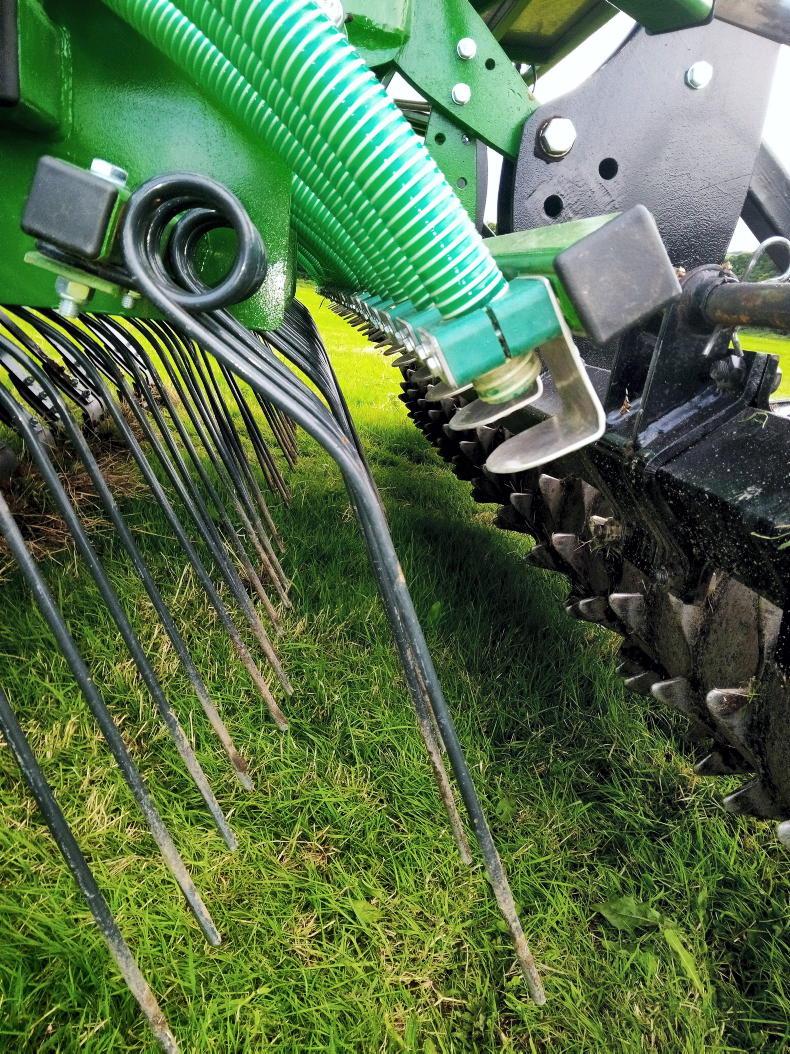
There are two rows of spring tines to remove dead material from the sward as well as help create a finer seedbed.
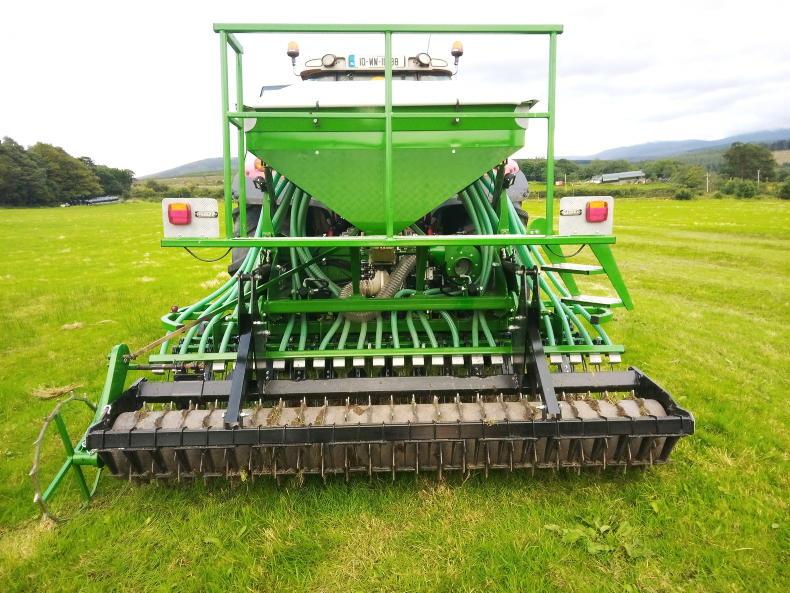
Completing the process is the rear roller unit which Peter adapted from a power harrow.
The drill has essentially three tool bars. Up front are 13 levelling paddles with two interchangeable points on each. The idea is to level the surface of poached ground and break up clods with the points, marking the surface and helping create a seedbed. The intensity of the levelling paddles is controlled hydraulically and can be adjusted on the go. Secondly, there are dual rows of spring tines (500mm x 12mm) which are adjustable together hydraulically as one tool, with independent adjustment done manually. The spring tines are designed to scarify, removing any dead material from the sward and helping to create a fine seedbed in ploughed cultivated land.
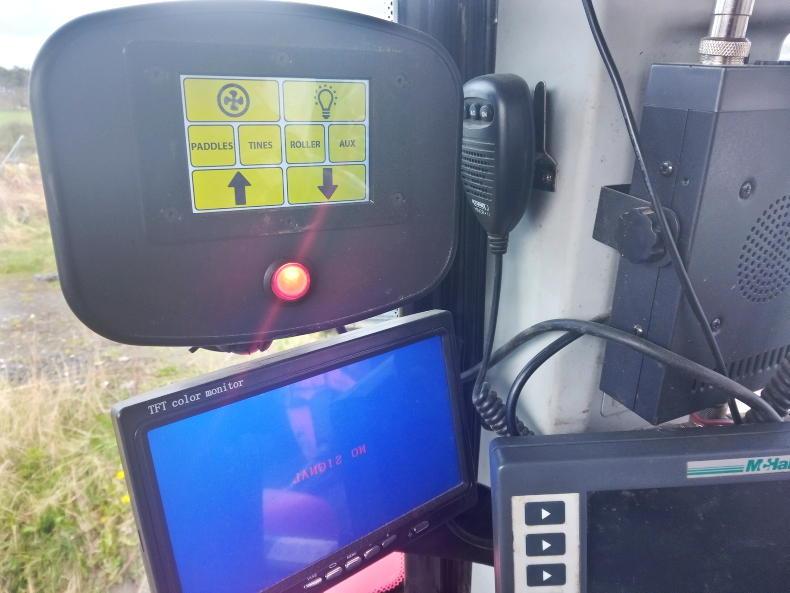
All of the drill's functions are controlled from the purpose-built terminal via load sensing hydraulics.
Behind the spring tines are the 24 outlet hoses and deflector plates for the Accord seeder. As the drill is ground drive, the forward speed controls the seed metering system by a wheel attached to the rear roller unit.
Finally, to the rear of the machine is a roller adopted from a power harrow to consolidate the seedbed, which again is fully hydraulically adjustable.
The weight placed on the roller in turn determines the weight on the other toolbars to a degree.
The beauty of the machine, Peter noted, is the ability to adjust the aggressiveness of each tool from the cab, for example when overseeding a particular field that may have more damage in a certain area. Alternatively, the machine can be used as single-purpose tool such as a tine harrow, levelling board or roller by disengaging the other tools from working position hydraulically.
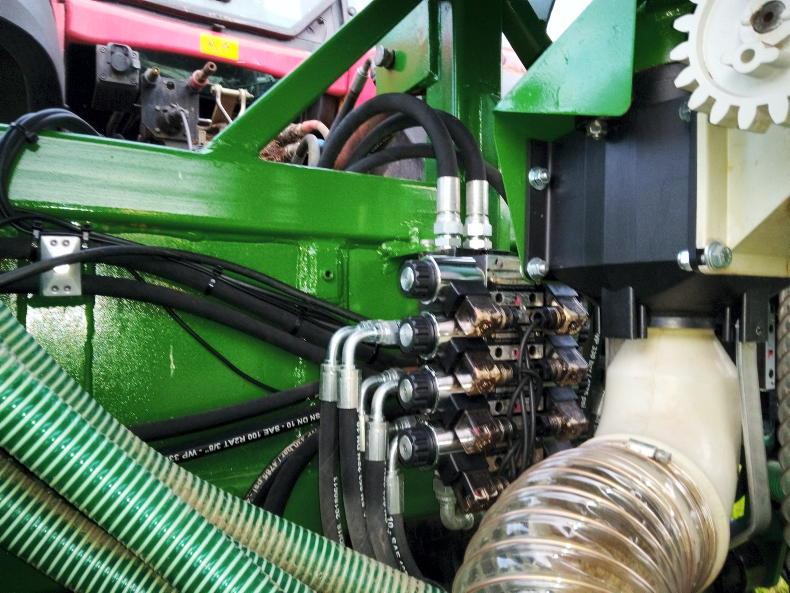
Given the degree of hydraulic adjustability with the drill, Peter opted to fit it with load-sensing hydraulics.
He said: “I’ve drilled over 50 acres of varying ground both overseeding and into ploughed land, all of which went trouble-free with great results. Granted that there are a few small tweaks I intend on making in certain areas on the next machine, such as a larger rear-loading platform, but, all in all, I think it’s been a good success.”
Once the drill was completed, Peter decided to enter it into the 2020 Virtual Innovation Arena under the category of farm level innovation, which he went on to win.
Despite the challenges of bringing a new product to market and getting up and running amid COVID-19 restrictions, Peter is determined to get his drill out there.
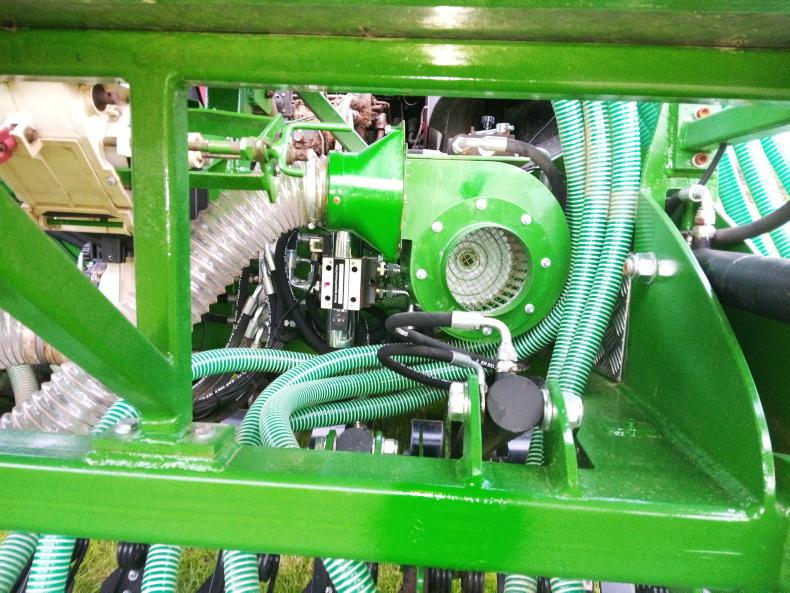
The drill uses a Kverneland metering and seed distribution unit.
Since then, he has set up Bullseye Engineering, the company which he will trade under. The aim for the months ahead is to tweak and finalise the design of the PTR 3000s drill and progress to the next stage with the help and support of his Local Enterprise Office.
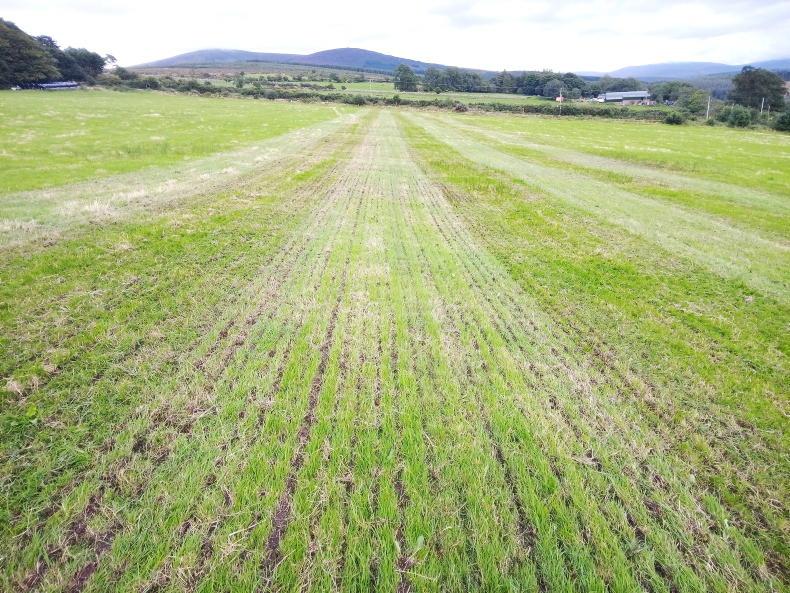
Drilling completed into existing grassland.
The intention is to initially outsource aspects of manufacturing – cutting of steel, blow moulding of seed hopper – locally to get the ball rolling and carry out assembly himself. By the end of the summer, Peter plans to have units ready for demonstration and from there he aims to work on breaking into the market.
“It’s been a tough 12 months in trying to make progress with COVID-19, which has delayed things. The initial plan was to officially launch the drill and Bullseye at this year’s Ploughing but that remains uncertain.”
Asked where he sees unit pricing, Peter said: “At the moment, I see the standard drill being priced in the region of €20,000 plus VAT; it’s quite hard to tell at this stage.”
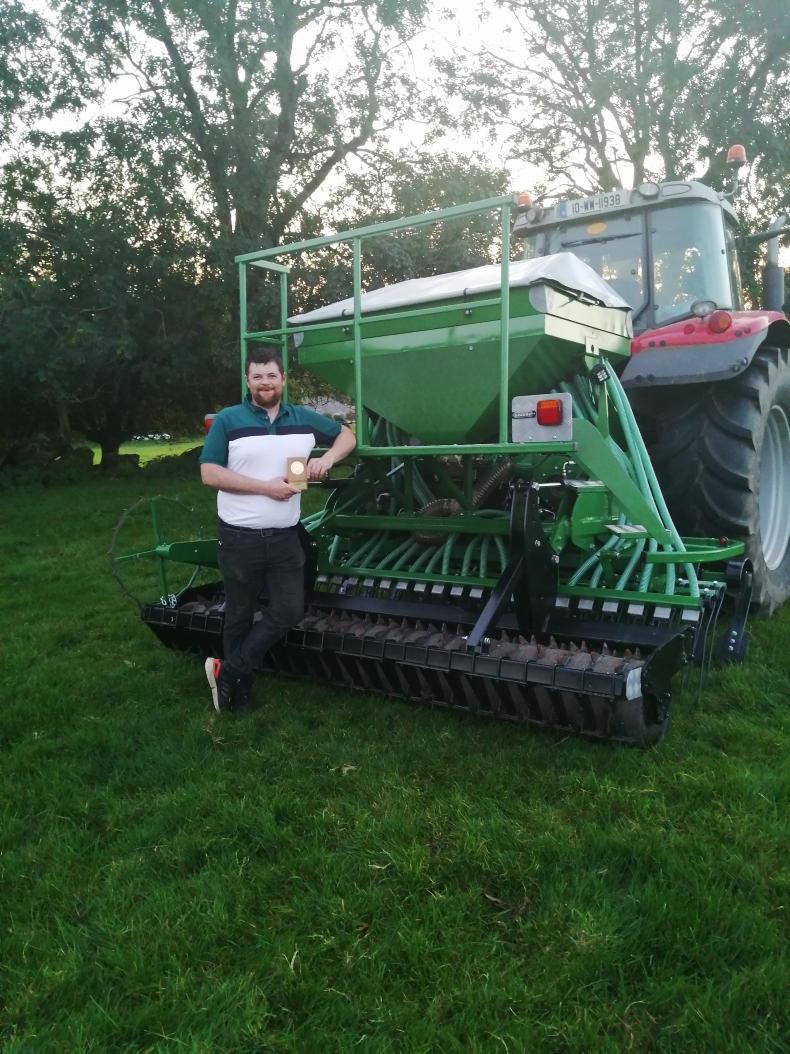
Peter O'Sullivan, Blessington Co Wicklow.
Moving to where he would like to see the business in the years ahead, he said: “Once up and running with the PTR 3000s, I’d like to add more options in terms of rear rollers, smooth prism, etc, along with a potentially different metering system and other bits.
“Beyond that, the long-term plan would be to offer other machines, potentially a direct disc drill. But, for now, it’s about focusing on getting properly set up and established.”
Peter O’Sullivan farms with his father at the foot of the Wicklow Mountains, near Blessington.
They also run a small contracting business carrying out the services of baling, plant hire and, in more recent years, reseeding, which led Peter to set up Bullseye Engineering.
Having struggled with ploughing due to the rocky Wicklow surroundings, Peter made the decision to ditch the plough and try his hand at building a machine for low-disturbance grassland reseeding.
“I bought a plough and found myself selling it a year later. It was too hard to keep going due to the amount of stones in our land. Ploughing around here raises a lot of stones. We tried power harrowing, but it wasn’t much better.
“So, I said I’d take the chance and try build a machine capable of overseeding into existing grassland, as well as being capable of seeding directly into ploughed cultivated land.”
Peter’s hands-on approach and passion for engineering dates back to his youth. He trained as a fitter with Lufthansa Technik at the Baldonell facility in Dublin, spending five years predominately rebuilding aircraft engines.
However, the company shut in 2013 and Peter began driving machinery for a time in Dublin before purchasing his own digger and coming home to focus entirely on the farm and contracting business.
Building a machine for the job
Over the winter of 2018, Peter started working on his design. “I started the build the following spring. The only time I had to dedicate to it was spare time in the evenings and on weekends. Certain aspects were designed on the fly.

The drill provides a multipurpose solution for both overseeding and drilling into ploughed and cultivated ground.
“For example, I originally was going to have each of the tool bars manually adjustable, but then I decided hydraulic adjustment would be a better job.
“Things like this meant there were subsequent changes on the go. This and the fact I was limited with tools was time-consuming. I had no access to plasma cutters or anything like that. Everything was cut with an angle grinder and drilled or welded manually.”

Peter won the 2020 farm level innovation award for his multipurpose PTR 3000s drill.
Peter took the bones of an old Kverneland Accord drill – including the seed unit, metering system, seed hopper, distribution system and hydraulic fan – and worked from there.
The fact that the Accord is a straightforward, proven drill with parts still readily available influenced the choice.
“The end goal was to build a practical machine more so than something fancy. Some individual components took me as long as a day to make, so it wasn’t a fast process.”

Each of the tool bars can have its working intensity adjusted hydraulically.
Peter equipped the drill with load-sensing hydraulics, which he said was a considerable cost, but added hugely to the ease of use of the machine, eliminating a number of double-acting spool valves. Everything including the individual tools and hydraulic fan for the seeding unit is worked off the load-sensing valve block and a single terminal in turn.

To the front of the drill are 13 adjustable levelling paddles to level the surface and break clods.
This means that if the tractor is fitted with load sensing, then only one double-acting spool is required to use the drill. Peter says the finished drill weighs in the region of 1,450kg to 1,500kg unladen and recommends a minimum power requirement in the region of 120hp.
The end product of Peter’s hard graft is a multipurpose 3m drill and grassland management tool capable of both overseeding and seeding into ploughed and cultivated land.
This first machine is what he calls the Bullseye Engineering PTR 3000s multipurpose drill. The model lettering stands for paddles, tines and roller (PTR), while 3000 denotes the 3m working width and S stands for seeder.

There are two rows of spring tines to remove dead material from the sward as well as help create a finer seedbed.

Completing the process is the rear roller unit which Peter adapted from a power harrow.
The drill has essentially three tool bars. Up front are 13 levelling paddles with two interchangeable points on each. The idea is to level the surface of poached ground and break up clods with the points, marking the surface and helping create a seedbed. The intensity of the levelling paddles is controlled hydraulically and can be adjusted on the go. Secondly, there are dual rows of spring tines (500mm x 12mm) which are adjustable together hydraulically as one tool, with independent adjustment done manually. The spring tines are designed to scarify, removing any dead material from the sward and helping to create a fine seedbed in ploughed cultivated land.

All of the drill's functions are controlled from the purpose-built terminal via load sensing hydraulics.
Behind the spring tines are the 24 outlet hoses and deflector plates for the Accord seeder. As the drill is ground drive, the forward speed controls the seed metering system by a wheel attached to the rear roller unit.
Finally, to the rear of the machine is a roller adopted from a power harrow to consolidate the seedbed, which again is fully hydraulically adjustable.
The weight placed on the roller in turn determines the weight on the other toolbars to a degree.
The beauty of the machine, Peter noted, is the ability to adjust the aggressiveness of each tool from the cab, for example when overseeding a particular field that may have more damage in a certain area. Alternatively, the machine can be used as single-purpose tool such as a tine harrow, levelling board or roller by disengaging the other tools from working position hydraulically.

Given the degree of hydraulic adjustability with the drill, Peter opted to fit it with load-sensing hydraulics.
He said: “I’ve drilled over 50 acres of varying ground both overseeding and into ploughed land, all of which went trouble-free with great results. Granted that there are a few small tweaks I intend on making in certain areas on the next machine, such as a larger rear-loading platform, but, all in all, I think it’s been a good success.”
Once the drill was completed, Peter decided to enter it into the 2020 Virtual Innovation Arena under the category of farm level innovation, which he went on to win.
Despite the challenges of bringing a new product to market and getting up and running amid COVID-19 restrictions, Peter is determined to get his drill out there.

The drill uses a Kverneland metering and seed distribution unit.
Since then, he has set up Bullseye Engineering, the company which he will trade under. The aim for the months ahead is to tweak and finalise the design of the PTR 3000s drill and progress to the next stage with the help and support of his Local Enterprise Office.

Drilling completed into existing grassland.
The intention is to initially outsource aspects of manufacturing – cutting of steel, blow moulding of seed hopper – locally to get the ball rolling and carry out assembly himself. By the end of the summer, Peter plans to have units ready for demonstration and from there he aims to work on breaking into the market.
“It’s been a tough 12 months in trying to make progress with COVID-19, which has delayed things. The initial plan was to officially launch the drill and Bullseye at this year’s Ploughing but that remains uncertain.”
Asked where he sees unit pricing, Peter said: “At the moment, I see the standard drill being priced in the region of €20,000 plus VAT; it’s quite hard to tell at this stage.”

Peter O'Sullivan, Blessington Co Wicklow.
Moving to where he would like to see the business in the years ahead, he said: “Once up and running with the PTR 3000s, I’d like to add more options in terms of rear rollers, smooth prism, etc, along with a potentially different metering system and other bits.
“Beyond that, the long-term plan would be to offer other machines, potentially a direct disc drill. But, for now, it’s about focusing on getting properly set up and established.”

















 This is a subscriber-only article
This is a subscriber-only article










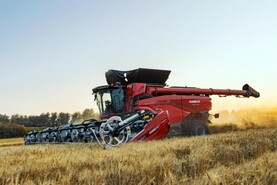
SHARING OPTIONS: